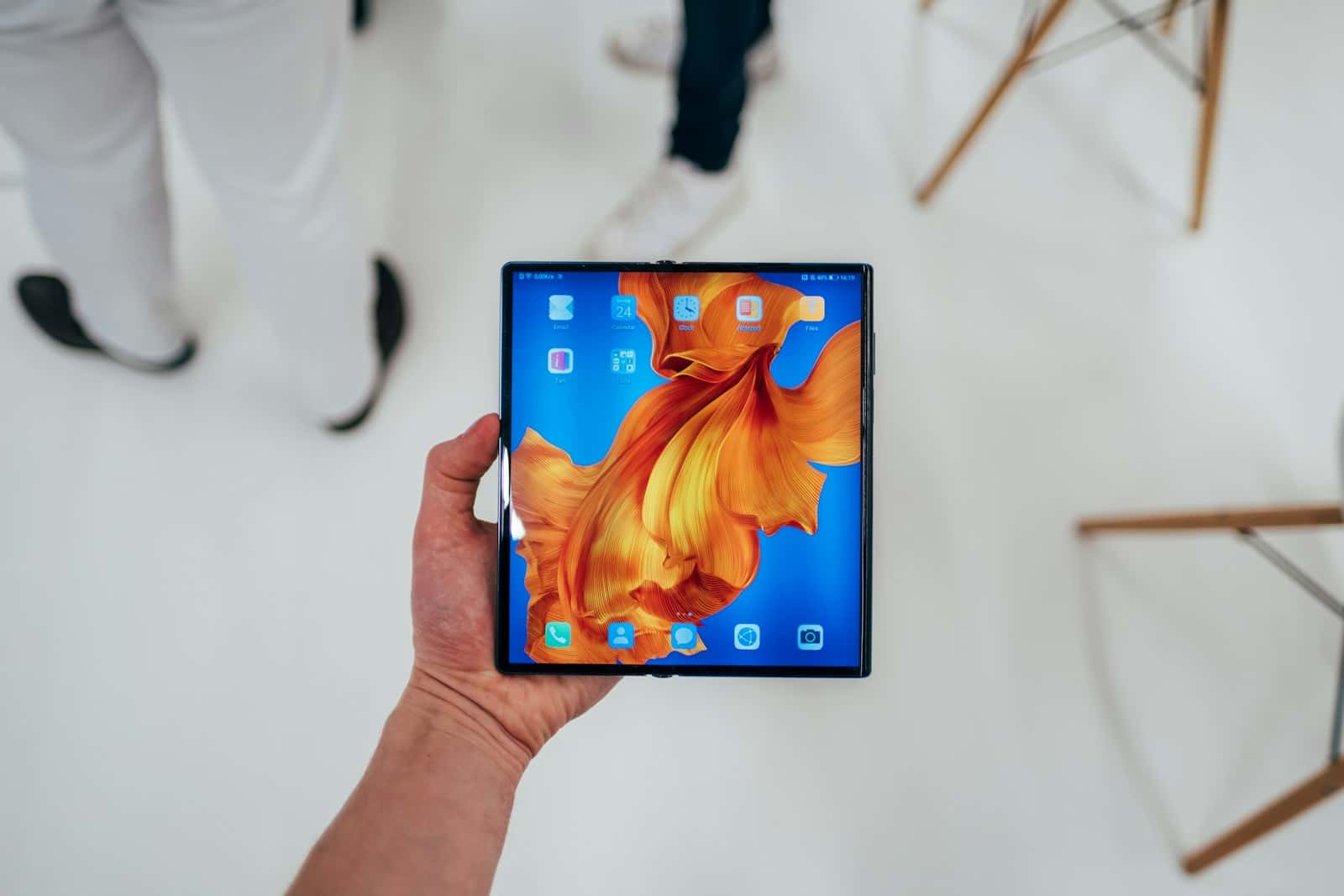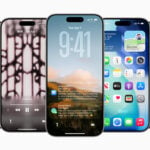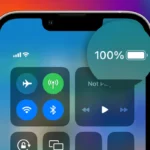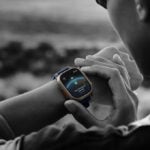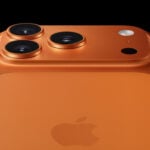Apple may finally be entering the foldable phone market, and if reports are accurate, 2026 could mark the debut of a next-gen iPhone that bends—not just in innovation, but in price too. According to trusted analyst Ming-Chi Kuo, Apple is preparing a high-end foldable iPhone that’s likely to launch with a premium price tag and exclusive features designed to differentiate it from anything else on the market—including its own iPhone Pro Max.
A Foldable Future: What Apple’s Planning
Ming-Chi Kuo’s latest supply chain analysis suggests Apple’s foldable iPhone is well into development, though key hardware decisions are still being finalized. Here are the current expectations:
- Samsung Display is reportedly tapped to produce as many as 8 million foldable OLED panels for Apple in 2026. This indicates significant production volume, not just a limited experimental run.
- The hinge mechanism—a historically tricky component for durability—is still under development. Apple is likely seeking a robust design that avoids the creasing issues common in current foldables.
- The device will come with “premium pricing,” placing it above the current Pro Max lineup. Industry speculation pegs the price between $1,500 and $2,000+, aligning with foldable flagships like the Galaxy Z Fold5 or Huawei Mate X5.
Apple has not confirmed the device or offered any official comment, and Kuo himself cautions that plans could change depending on development hurdles.
Apple’s First Foldable iPhone: What We Know So Far
Reliable analyst Ming-Chi Kuo, known for his Apple supply chain insights, says the project is progressing but not yet finalized. According to his latest report:
- Samsung Display is expected to provide the panels, and could manufacture up to 8 million foldable screens for Apple in 2026.
- The hinge design hasn’t been finalized, suggesting Apple is still ironing out key hardware features.
- Kuo also emphasized that the release timeline or design could still shift depending on supply chain developments and internal decisions.
- The device is projected to carry “premium pricing”, signaling a position above the current Pro Max line—possibly in the $1,500–$2,000+ range.
Ming-Chi Kuo said on X:
Apple Foldable iPhone Updates:
- Assembly supplier Foxconn is expected to officially kick off the project in late 3Q25 or early 4Q25. As of now, many component specifications (including the hinge, which has drawn considerable market attention) have yet to be finalized.
- The foldable display is one of the few components with finalized specifications and serves as a good reference for estimating potential shipments. Samsung Display (SDC) plans to build annual production capacity for 7-8 million foldable panels to supply the 2026 foldable iPhone. Given that actual production in 2026 may span only a few months, panel shipments that year are likely to fall short of full capacity.
- Recent market rumors suggest Apple has placed an order for 15–20 million foldable iPhones. Based on checks across multiple components, this volume likely reflects cumulative demand over the product’s 2–3 year lifecycle, rather than 2026 alone. This indicates that Apple’s foldable iPhone, expected to enter mass production in 2H26, may ship several million units annually in both 2027 and 2028, possibly due to its premium pricing.
- It’s worth noting that all plans remain subject to change prior to the official project kickoff.
Why Apple’s Entry Into Foldables Could Matter More Than Anyone Else’s
Apple has historically waited to enter new hardware categories until the tech matures—think iPod, iPhone, Apple Watch, or even Vision Pro. When Apple steps in, it’s usually with a tighter hardware-software integration and user experience polish that makes the product feel inevitable rather than experimental.
That’s what could make a foldable iPhone game-changing. Today’s foldables from Samsung, Huawei, and Motorola have improved since 2019, but they still suffer from:
- Visible creases at the fold line
- Delicate hinge mechanisms
- Battery and thickness trade-offs
- Software that doesn’t always feel optimized
If Apple nails the execution—delivering a crease-free screen, more natural multitasking, and seamless iOS continuity—it could redefine foldables not as a novelty, but as a legitimate evolution of the smartphone.
Is There Even a Market for Foldables?
Foldables have yet to go mainstream despite years on the market. According to Trendforce, only 1.5% of smartphones sold in 2024 were foldables. And Counterpoint Research predicts a decline in foldable sales in 2025, driven by high costs, durability concerns, and limited practical use cases.
That makes Apple’s timing all the more interesting. With iPhone revenue flattening since its 2022 peak, the company is under pressure to create meaningful differentiation and justify premium upgrades. A foldable model could serve as both a halo product and a new category.
What Could a Foldable iPhone Look Like?
While Apple’s final design remains under wraps, some educated guesses can be made:
- Form Factor: Apple may opt for a book-style design like the Galaxy Z Fold or a hybrid between a phone and mini iPad.
- Display: Likely an OLED panel with ultra-thin glass (UTG) and possibly ProMotion support (120Hz refresh rate).
- Multitasking: Expect native iOS adaptations for multitasking—floating windows, split view, or continuity with iPadOS.
- Durability: Apple’s solution may use carbon fiber or next-gen materials for the hinge, targeting longevity without bulking up the phone.
Apple could also bring its AI features, advanced camera system, and ecosystem syncing to the foldable experience, making it more than just a tech demo.
As we head into late 2025, expect to see more evidence of Apple’s foldable ambitions—possibly through patent filings, component leaks, or iOS betas with fold-specific code. If the company delivers what many expect—a polished, durable, and useful foldable iPhone—it could be the product that finally makes foldables mainstream.
Why This Matters
Apple has held off on entering the foldables race, even as competitors like Samsung, Huawei, and Motorola have released several foldable models since 2019. These rivals currently dominate the niche foldables market, offering products like the Galaxy Z Fold series and Mate X lineup.
Apple’s approach typically leans toward entering a new product category after the hardware matures—focusing on polish, ecosystem integration, and user experience. That means their entry could raise the bar in both hardware durability and software optimization, which are still weak spots in today’s folding phones (notably creasing and long-term hinge reliability).
Market Context: Is There Demand?
Despite the hype, folding phones remain a small segment of the overall smartphone market:
- Only 1.5% of smartphones sold in 2024 were foldables, according to Trendforce.
- Counterpoint Research forecasts a decline in folding phone sales in 2025, making Apple’s potential entry in 2026 even more high-stakes.
The challenge for Apple will be to justify the foldable form factor beyond novelty, particularly as recent iPhones (and the iPhone 16 series expected this fall) already push high-end pricing and capabilities.
But if Apple can deliver a foldable iPhone that:
- Eliminates crease visibility,
- Offers iPad-like multitasking,
- Seamlessly integrates with iOS and the broader Apple ecosystem…
…then it could reshape the category and reinvigorate the premium smartphone space just as iPhone revenue growth has started to plateau.
More details will likely emerge over the coming months as we get closer to prototype leaks, potential production trials, or iOS updates hinting at foldable-specific features.
Samsung’s Try Galaxy App
Samsung’s Try Galaxy app has recently been updated to showcase One UI 7, offering iPhone users an even more immersive virtual experience of Samsung’s flagship Galaxy ecosystem. Designed as a web-based demo, this app simulates the look and feel of Galaxy devices—including foldables like the Galaxy Z Fold 5—right on iPhones running iOS 14 or later. The latest version now highlights features like Galaxy AI, a redesigned Quick Panel, and simulated experiences with the Galaxy Watch and Galaxy Ring.
Users can easily add the app to their iPhone’s Home Screen for instant access. Once launched, it mimics Samsung’s One UI 7 interface and key Galaxy features, from multitasking to AI-powered enhancements. The app is especially helpful for users considering the switch to Android or curious about Samsung’s foldable phone lineup.
The new Try Galaxy experience even includes a foldable simulator, letting users see how a Z Fold-style device works with App Continuity and split-screen multitasking. For those on the fence about switching from iPhone to Samsung, it’s the closest thing to test-driving a Galaxy without leaving home.
Key Takeaways
- The Try Galaxy app simulates Samsung’s One UI 7 with Galaxy AI features
- Available for iPhones 7 and newer (running iOS 14+)
- Includes previews of Galaxy Z Fold 5, Galaxy Watch, and Galaxy Ring experiences
- Now includes Galaxy AI demos, redesigned quick settings, and smart assistant tools
- Installs as a web app directly on the iPhone Home Screen
Transitioning from iPhone to Galaxy Z Fold 5
Switching to a Galaxy Z Fold 5 brings an entirely new mobile experience—offering both a traditional smartphone and a tablet in one. The folding design, paired with Samsung’s robust One UI software, supports enhanced productivity through multi-window multitasking, Flex Mode camera options, and seamless cross-device syncing.
Comparing Operating Systems
One UI 7 prioritizes user customization and AI-powered convenience. It differs from iOS by offering adjustable home screen grids, more granular notification controls, and features like Good Lock for deep theming and personalization. AI tools such as translation, transcription, and photo editing are now baked into the OS experience.
Galaxy users also benefit from Smart Suggestions, context-aware reminders, and routines that adapt the phone’s behavior based on time, location, or app usage—elements still limited in the Apple ecosystem.
The Fold Experience
The Galaxy Z Fold 5’s 7.6-inch AMOLED inner screen unfolds into a tablet, ideal for gaming, video playback, and productivity. The external 6.2-inch screen handles calls, texts, and one-handed use. Samsung’s latest hinge mechanism has improved durability and a tighter fold, making it more pocketable.
With App Continuity, users can start on the outer display and pick up where they left off on the inner screen. Optimized apps adapt layouts instantly, and Samsung’s Labs feature forces compatibility on apps that don’t natively support foldables.
Utilizing Unique Features
Flex Mode lets you use the device like a laptop, propping it up for hands-free video calls or angled photography. You can also launch three apps at once, with draggable windows and customizable layouts for peak multitasking.
Key Multitasking Tools:
- Edge Panel for quick access to favorite apps
- App Pairing to launch dual apps instantly
- Floating window mode and pop-up views
- Split-screen multitasking with drag-and-drop
App Ecosystem and Compatibility
Most popular iOS apps are available on Android, and Samsung’s Galaxy Store includes exclusive themes, plugins, and watch faces. Messaging alternatives like WhatsApp and Signal cover iMessage’s absence, and Smart Switch handles app migration automatically.
Samsung’s AI Search and Smart Widgets offer a new level of personalization, learning user habits to present relevant content, shortcuts, and even dynamic wallpapers.
Seamless Integration with Samsung Devices
Samsung’s ecosystem is now broader than ever, including wearables like the Galaxy Watch and the upcoming Galaxy Ring. Try Galaxy previews both, allowing iPhone users to explore connected features such as fitness tracking, gesture control, and health monitoring.
Features like Quick Share, SmartThings, and Samsung DeX give Galaxy users an interconnected experience across devices—similar to Apple’s Continuity but more flexible across Android and Windows platforms.
Galaxy Integration Highlights:
- Clipboard sharing between phone, tablet, and PC
- Smart View for wireless screen mirroring
- Auto-pairing and switching for Galaxy Buds
- Samsung DeX desktop-like experience on external displays

